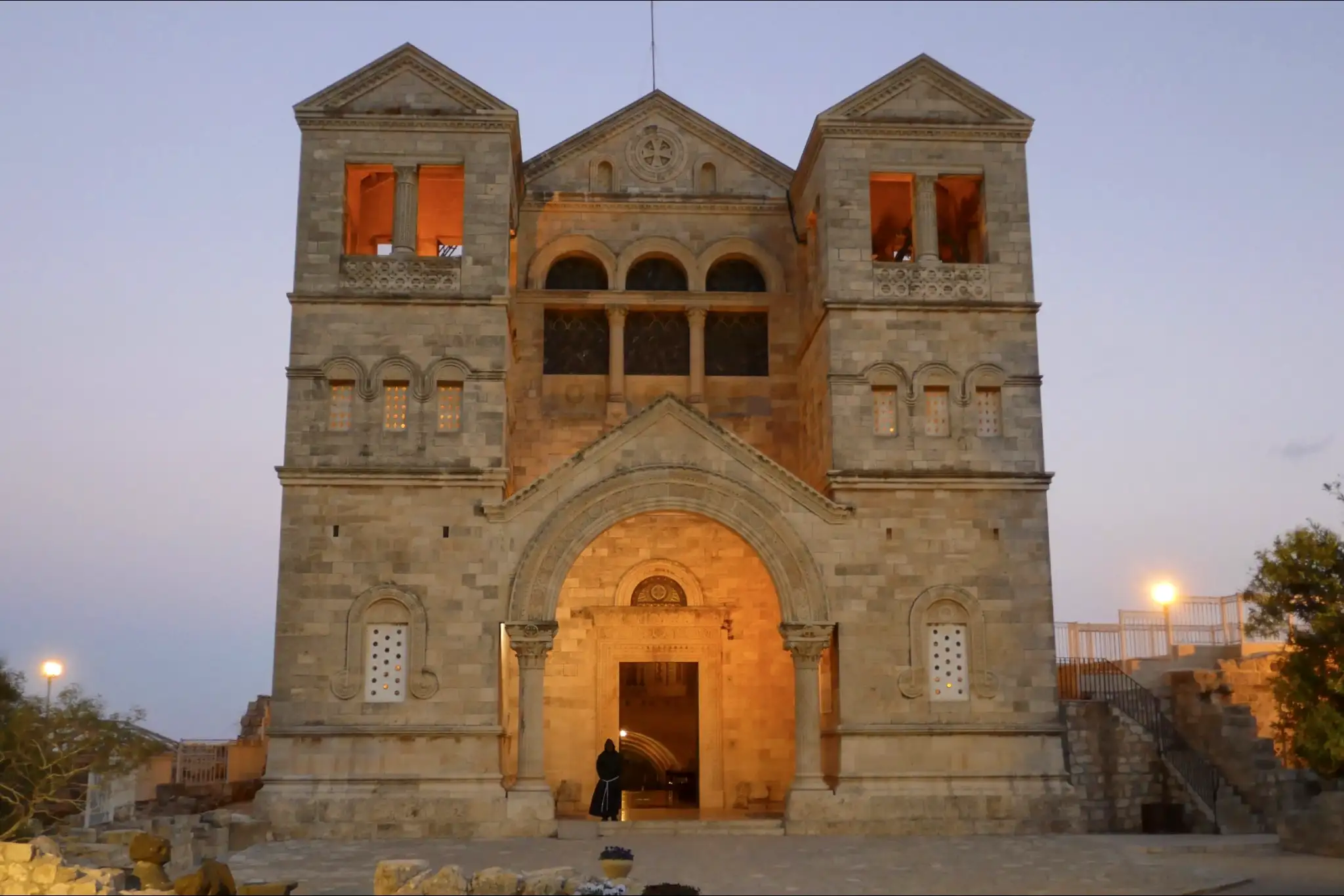Mount Tabor
Mount Tabor, a distinctive dome-shaped hill rising 575 meters above the Jezreel Valley in northern Israel, is a significant Christian pilgrimage site, revered as the traditional location of the Transfiguration of Jesus (Matthew 17:1–9). Its rich history, strategic position, and spiritual importance have made it a focal point for pilgrims, historians, and travelers for centuries.
Archaeological evidence indicates human activity on Mount Tabor since the Bronze Age, with Canaanite settlements exploiting its fertile surroundings. Its isolated, rounded shape made it a natural fortress, referenced in the Hebrew Bible as a military stronghold (Judges 4:6–14) during Deborah and Barak's victory over the Canaanites. By the Hellenistic and Roman periods, Tabor was fortified, and Josephus, the 1st-century historian, described its defenses during the Jewish Revolt. Its strategic value persisted through Byzantine, Crusader, and Ottoman times, with ruins of walls and cisterns still visible.
The Christian significance of Mount Tabor emerged in the 4th century CE, when early Church Fathers, including Cyril of Jerusalem, identified it as the site where Jesus was transfigured, revealing his divine glory to Peter, James, and John, accompanied by Moses and Elijah. This event, central to Christian theology, made Tabor a pilgrimage destination. By the 6th century, Byzantine monasteries dotted the summit, as noted by pilgrims like the Piacenza Pilgrim. Crusaders built churches in the 12th century, but these were destroyed under Muslim rule. The current Basilica of the Transfiguration, constructed in 1924 by Italian architect Antonio Barluzzi, dominates the summit. Its Alonziac design, resembling a Syrian fortress, features two towers symbolizing Moses and Elijah, a central dome, and mosaics depicting the Transfiguration. A Greek Orthodox church, dedicated to Elijah, also stands nearby, reflecting shared Christian veneration.
As a pilgrimage site, Mount Tabor attracts thousands, especially during the Feast of the Transfiguration (August 6), when Catholics and Orthodox hold liturgies and processions. Pilgrims ascend via a winding road or footpath, passing through oak and pine groves, to reach the summit's serene plateau. The basilica's interior, with its radiant apse mosaic of Christ in glory, fosters contemplation, while panoramic views of the Jezreel Valley connect visitors to biblical landscapes. The site's accessibility, about 10 km from Nazareth, integrates it into Holy Land itineraries alongside sites like the Sea of Galilee.
Despite its religious prominence, Mount Tabor's history includes conflicts, including battles during the 1948 Arab-Israeli War. Today, it lies within a national park, balancing spiritual and ecological tourism. The summit's Franciscan monastery and Orthodox complex maintain its sacred character, offering hospitality to pilgrims. For Christians, Tabor embodies a tangible link to Jesus' divine revelation, making it a place of prayer and awe, where the human and divine converge amid Israel's ancient hills.

Martin Gray is a cultural anthropologist, writer and photographer specializing in the study of pilgrimage traditions and sacred sites around the world. During a 40 year period he has visited more than 2000 pilgrimage places in 160 countries. The World Pilgrimage Guide at sacredsites.com is the most comprehensive source of information on this subject.




